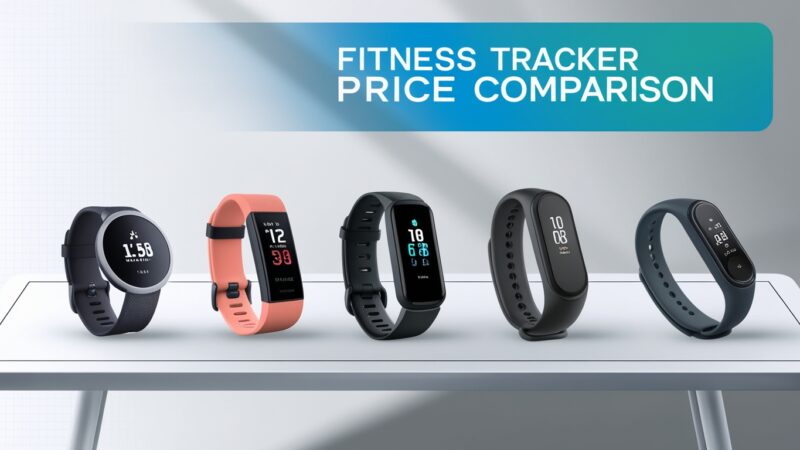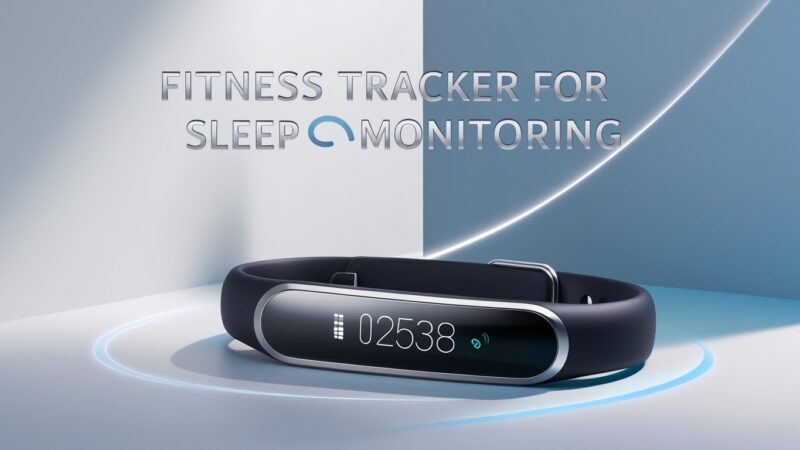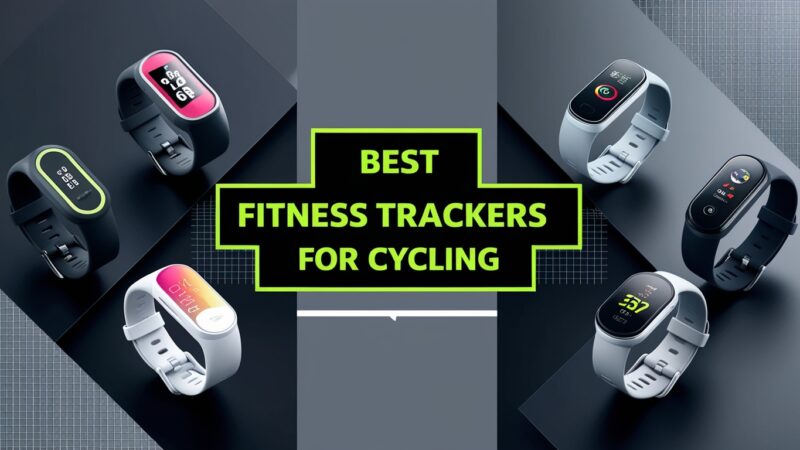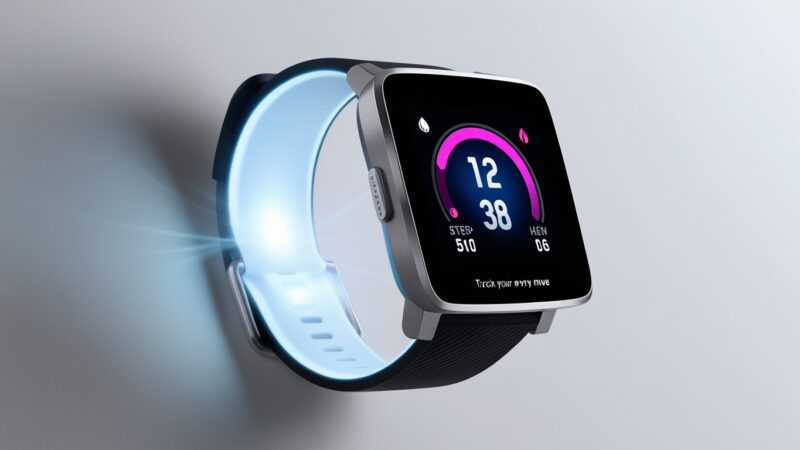Best Fitness Tracker for Heart Rate Accuracy

The Importance of Heart Rate Monitoring with Fitness Trackers
Understanding the Role of Heart Rate Monitoring in Fitness
Ever wondered how effective your workouts really are? Well, heart rate monitoring is the answer to getting those insights you need.
These days, fitness trackers come packed with tech that helps us keep an eye on our heart rate, giving us essential data to fine-tune our fitness goals. It’s like having a personal trainer right on your wrist.
Measuring Cardiovascular Health
Your heart rate, noted in beats per minute (BPM), is a direct reflection of your cardiovascular health. So, when you use a fitness tracker to monitor your heart rate, you’re not just tracking numbers—you’re gaining insight into how well your heart’s working during physical activity. This monitoring can alert you to potential health concerns, allowing you to make educated decisions about your fitness regimen.
Personalized Workout Optimization
Fitness trackers can help you craft workout plans tailored just for you. As you track your heart rate throughout different exercises, you can pinpoint the right intensity for various workouts—be it aerobic, strength training, or something else entirely. This way, you avoid overtraining while ensuring you get the best bang for your workout buck!
Recovery and Stress Management
Monitoring your heart rate isn’t just important during workouts. It can help you manage recovery periods, too. After an intense session, you want to see your heart rate drop back down, which shows your body is bouncing back effectively. If it doesn’t, that might be a hint you need to take a step back and allow your body the rest it needs.
Tracking Fitness Milestones
Using a fitness tracker allows you to see your progress over time. You can track how your heart rate improves, setting new goals to challenge yourself. This ongoing data collection is a motivator that can help you stay on track with your fitness journey.
The Advantages of Heart Rate Monitoring with Fitness Trackers
Using a fitness tracker with heart rate monitoring comes with a treasure trove of benefits that can help you smash your fitness goals.
Improved Workout Efficiency
By keeping tabs on your heart rate throughout exercises, you can ensure that you’re in your optimal zone. This maximizes workout effectiveness and helps you steer clear of injuries.
Enhanced Goal-Setting
Heart rate data gives you a clearer picture of your fitness level. This insight helps you to set realistic goals and lets you track your progress more effectively.
Increased Motivation
Nothing feels better than seeing your heart rate improve over time. It serves as proof that you’re making strides in your fitness journey, motivating you to keep pushing forward.
Comprehensive Health Monitoring
Besides fitness levels, tracking your heart rate can shed light on other factors like stress levels, sleep quality, and even underlying health conditions.
Choosing the Right Fitness Tracker for Heart Rate Monitoring
Choosing the right fitness tracker can feel overwhelming, but focusing on key factors can help you make the best decision for your needs.
Accuracy
Go for trackers that offer advanced heart rate monitoring technologies, like optical sensors. Accuracy matters, so don’t settle for anything less than reliable readings.
Comfort and Wearability
A comfy tracker is more likely to stay on your wrist, which means you’ll get accurate data. Pick a design that resonates with your style while staying comfortable during activity.
Feature Set
Consider what additional capabilities matter to you. Features like GPS tracking, smartphone notifications, and activity-specific tracking can enhance your fitness experience.
Battery Life and Waterproofing
Look for trackers that can last days without needing a charge and those that can stand up to water if you plan on swimming or doing sweaty workouts.
Design and Comfort
The aesthetics and comfort level of a tracker are crucial. After all, you’ll wear it daily! The right design encourages you to stay consistent with your tracking.
Price and Value
Prices for fitness trackers vary greatly. Set your budget and seek devices that give you the best value for the features you need.
Integrations and Compatibility
Simplify your tracking by ensuring your chosen device syncs well with other apps or devices you use. Compatibility makes the entire process smooth.
Understanding Heart Rate Zones and Their Significance in Fitness
Heart rate zones are a fantastic way to structure your workouts effectively. Knowing how your heart rate fits into these zones can make a significant difference in achieving your fitness objectives.
Defining Heart Rate Zones
So, what exactly are heart rate zones? They break down into five categories:
- Zone 1 (Resting Zone): 50-60% of your max heart rate. Ideal for light activities and recovery.
- Zone 2 (Fat Burning Zone): 60-70% of your max heart rate. Great for endurance and fat burning.
- Zone 3 (Aerobic Zone): 70-80% of your max heart rate. Good for cardiovascular fitness and stamina.
- Zone 4 (Anaerobic Zone): 80-90% of your max heart rate. Effective for building strength and high-intensity training.
- Zone 5 (VO2 Max Zone): 90-100% of your max heart rate. Used for short, maximum effort bursts.
Calculating Your Maximum Heart Rate
To find your maximum heart rate, a simple formula is “220 – your age.” So, let’s say you’re 35 years old; that puts your max at 185 BPM.
Tailoring Your Workouts to Heart Rate Zones
Here’s how to use those heart rate zones to shape your workouts:
- Zone 1 (Resting Zone): Use this for warm-ups and cool-downs.
- Zone 2 (Fat Burning Zone): Make this your go-to for the bulk of your workouts.
- Zone 3 (Aerobic Zone): Perfect for steady-state cardio.
- Zone 4 (Anaerobic Zone): Use this for high-intensity sessions.
- Zone 5 (VO2 Max Zone): This one’s for infrequent but intense pushes.
The Significance of Heart Rate Tracking
Monitoring your heart rate during workouts is crucial. With fitness trackers, you’ll receive real-time feedback, allowing you to adapt your effort and maintain the intensity needed for your goals.
Leveraging Heart Rate Data to Optimize Your Workout Routine
Understanding Heart Rate and Its Importance in Fitness
Your heart rate is vital to gauging workout effectiveness. When utilized correctly, the data from heart rate monitoring can revolutionize your fitness routine.
Monitoring Heart Rate During Exercise
One of the best aspects of a fitness tracker is its ability to keep tabs on your heart rate while you’re working out. This helps you stay within your defined intensity levels, ensuring an effective routine.
Identifying Heart Rate Zones
Familiarizing yourself with heart rate zones unlocks the potential for personalized workouts. Here’s a quick recap of typical zones:
Zone 1: Recovery (50-60% of max heart rate)
This is for low-intensity exercises or warm-ups.
Zone 2: Fat Burn (60-70% of max heart rate)
This zone is fat-focused and great for losing weight.
Zone 3: Cardio (70-80% of max heart rate)
This targets your cardiovascular system, improving fitness.
Zone 4: Threshold (80-90% of max heart rate)
This is reserved for pushing your limits with high-intensity training.
Zone 5: Maximum (90-100% of max heart rate)
Short bursts of maximum effort live here—ideal for HIIT.
Tailoring Your Workout Routine
Monitoring your heart rate lets you adjust your routines:
Weight Loss
Keep your workouts in the Fat Burn zone for maximum results.
Cardiovascular Fitness
Focus on the Cardio zone to boost your overall heart health.
Anaerobic Capacity
Include intervals that push you into the Threshold zone for strength-building.
Monitoring Recovery and Resting Heart Rate
Fitness trackers allow you to monitor not just heart rate during exercise but also your resting and recovery heart rates. These metrics are crucial for gauging your overall fitness status and the efficacy of your recovery routines.
Integrating Heart Rate Monitoring into Your Overall Wellness Regimen
Unlocking the Power of Heart Rate Monitoring for Comprehensive Wellness
In today’s busy world, heart rate monitoring can transform how you approach wellness. When you take advantage of the data this technology provides, it becomes easier to make informed choices that enhance your overall health.
Understanding Your Resting Heart Rate
Your resting heart rate offers insights into your cardiovascular health. Keeping track of this metric allows you to identify trends and areas needing your focus.
Maximizing Your Workout Efficiency
Knowing your target heart rate zones helps you work at the right intensity level. Fitness trackers can guide your workouts by offering alerts, ensuring you’re in the right zone.
Stress Management and Recovery
Stress plays a significant role in well-being. By tracking heart rate variability (HRV), fitness trackers reveal how your body deals with stress, helping you prioritize rest when necessary.
Sleep Quality and Restoration
Good sleep is critical for health, and heart rate data can assess your sleep quality. Features that track sleep stages provide insights into how to enhance your nightly rest.
Monitoring Health Conditions
If you have health issues like hypertension or heart disease, monitoring heart rate is invaluable. Fitness trackers can alert you to irregularities, helping you stay in touch with your healthcare provider.
By weaving heart rate monitoring into your wellness routine, you unlock countless advantages. It’s about understanding how your body reacts, making smarter choices, and ultimately enhancing your health and fitness journey.
You can now buy my E-Book on Discount for only $4! If you need personal help or a program, you can reach out to me on Instagram!
Advanced Features in Fitness Trackers for Heart Rate Monitoring
As technology continues to evolve, the latest fitness trackers are introducing amazing features that further enhance heart rate monitoring capabilities. Here are some advanced features you should look out for:
- ECG Monitoring: Some trackers now offer electrocardiogram (ECG) functionality. This feature helps detect irregular heart rhythms and can alert users to potential heart issues, enhancing the overall health management strategy. It’s like having a mini health clinic on your wrist!
- Heart Rate Variability (HRV): Tracking HRV, the variation in time between heartbeats, can give insights into stress levels and recovery. A higher HRV typically indicates better cardiovascular health and a well-recovered body.
- Sleep Apnea Detection: Certain trackers can monitor sleep patterns and even alert users to signs of sleep apnea, which is crucial for preventing long-term health issues.
- Adaptive Training Plans: Modern fitness trackers can create dynamic workout plans based on your heart rate data. If the system determines you’re overtraining, it may suggest a lighter workout to help with recovery.
- Real-Time Alerts: Many devices will notify you if your heart rate goes above or below a preset range, ensuring you stay within your desired heart rate zone. This can be invaluable for syncing your workout level with your fitness goals.
The Importance of Emotional Biometrics in Heart Rate Monitoring
A lesser-known but fascinating aspect of heart rate tracking is how it relates to emotional well-being. Today’s fitness trackers can provide insights into how your emotions and heart rate connect:
- Stress Management: By measuring your heart rate response to different stressors throughout the day, trackers can offer suggestions to manage stress better. This can aid in mental health, making wellness more holistic.
- Mindfulness and Breathing Exercises: Some trackers provide guidance on breathing exercises aimed at reducing heart rate and promoting relaxation, bridging the gap between fitness and mental wellness.
Sources: 1. NCBI: The Role of Fitness Trackers | 2. Healthline: Benefits of Fitness Trackers
Future Trends in Fitness Trackers for Heart Rate Monitoring
Looking beyond the current capabilities, here are a few trends expected to shape the future of fitness trackers and heart rate technology:
- Integration with Telehealth: We can expect fitness trackers to sync up with telehealth services, allowing healthcare professionals to monitor patient data remotely.
- AI and Machine Learning: Future models may use AI to interpret heart rate data more effectively, providing more customized fitness and health insights based on user habits.
- Wearable Tech Fashion: As aesthetics in technology evolve, anticipate devices that are not just functional but also stylish, encouraging consistent use and engagement.
- Sustainable Practices: Environmental concerns will lead to more sustainable manufacturing practices in fitness trackers, pushing brands to consider eco-friendly materials.
Sources: 1. Forbes: Emerging Trends in Health Tech | 2. PCMag: The Future of Wearable Technology
Summarizing the Importance of Heart Rate Monitoring with Fitness Trackers
In this fast-paced world, understanding and monitoring your heart rate has never been more vital. With various features, tools, and technologies at our fingertips, fitness trackers have become indispensable for anyone looking to enhance their fitness journey.
Whether it’s measuring your cardiovascular health, optimizing workouts, managing recovery, or even promoting emotional wellness, heart rate monitoring through fitness trackers serves as a comprehensive guide to making informed health choices. By continuing to explore new technologies and understanding the impact of data, we’re better equipped to embrace a healthier lifestyle.
For more information, explore our website. You can find answers to common questions in our FAQ section, learn more about us on our Home page, discover the range of services we offer in the What We Provide section, get in touch with us through the Contact page, and stay connected with us on our Socials.
You can now buy my E-Book on Discount for only $4! If you need personal help or a program, you can reach out to me on Instagram!






